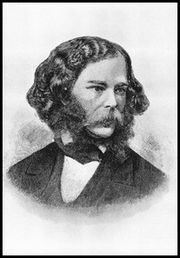Jane Austen
2008/9 Schools Wikipedia Selection. Related subjects: Writers and critics
Jane Austen ( 16 December 1775 – 18 July 1817) was an English novelist whose realism, biting social commentary and masterful use of free indirect speech, burlesque and irony have earned her a place as one of the most widely read and best-loved writers in British literature.
Austen lived her entire life as part of a large and close-knit family located on the lower fringes of English gentry. She was educated primarily by her father and older brothers as well as through her own reading. The steadfast support of her family was critical to Austen's development as a professional writer. Austen's artistic apprenticeship lasted from her teenage years until she was about thirty-five years old. During this period, she wrote three major novels and began a fourth. From 1811 until 1815, with the release of Sense and Sensibility (1811), Pride and Prejudice (1813), Mansfield Park (1814) and Emma (1815), she achieved success as a published writer. She wrote two additional novels, Northanger Abbey and Persuasion, both published after her death in 1817, and began a third, eventually titled Sanditon, but died before completing it.
Austen's works critique the novels of sensibility of the second half of the eighteenth century and are part of the transition to nineteenth-century realism. Austen's plots, though fundamentally comic, highlight the dependence of women on marriage to secure social standing and economic security. Like those of Samuel Johnson, one of the strongest influences on her writing, her works are concerned with moral issues.
During her lifetime, Austen's works brought her little fame and only a few positive reviews. Through the mid-nineteenth century, her novels were admired only by a literary elite. However, the publication of her nephew's A Memoir of Jane Austen in 1869 introduced her life and works to a wider public. By the 1940s, Austen was firmly ensconced in academia as a "great English writer", and the second half of the twentieth century saw a proliferation of Austen scholarship that explored many aspects of her novels: artistic, ideological, and historical. In popular culture, a Janeite fan culture has developed, centred on Austen's life, her works, and the various film and television adaptations of them.
Biography
Biographical information concerning Jane Austen is "famously scarce", according to one biographer. Only some personal and family letters remain (by one estimate only 160 out of Austen's 3,000 letters are extant), and her sister Cassandra (to whom most of the letters were originally addressed) censored those she retained. Other letters were destroyed by the heirs of Admiral Francis Austen, Jane's brother. Most of the biographical material produced for fifty years after Austen's death was written by her relatives and reflects the family's biases in favour of "good quiet Aunt Jane". Scholars have unearthed little more since.
Family
Jane Austen's father, George Austen (1731-1805), and his wife, Cassandra (1739-1827), were members of substantial gentry families. George was descended from a family of woollen manufacturers which had risen through the professions to the lower ranks of the landed gentry. Cassandra was a member of the prominent Leigh family. For much of Jane's life, from 1765 until 1801, George Austen served as the rector of the Anglican parishes at Steventon, Hampshire and a nearby village. From 1773 until 1796, he supplemented this income by farming and by teaching three or four boys at a time who boarded at his home.
Austen's immediate family was large: six brothers — James (1765–1819), George (1766–1838), Edward (1767–1852), Henry Thomas (1771–1850), Francis William (Frank) (1774-1865), Charles John (1779–1852) - and one sister, Cassandra Elizabeth (1773–1845), who, like Jane, died unmarried. Cassandra was Austen's closest friend and confidante throughout her life. Of her brothers, Austen felt closest to Henry, who became a banker and, after his bank failed, an Anglican clergyman. Henry was also his sister's literary agent. His large circle of friends and acquaintances in London included bankers, merchants, publishers, painters, and actors: he provided Austen with a view of social worlds not normally visible from a small parish in rural Hampshire. George had epilepsy and at the age of six was sent to live in care with his mother's younger brother, Thomas Leigh, who was born with a mental disability. Charles and Frank served in the navy, both rising to the rank of admiral. Edward was brought up by his second cousin Thomas Knight, eventually inheriting Knight's estate and taking his name.
Early life and education
Austen was born on 16 December 1775 at Steventon rectory. After a few months at home, her mother placed Austen with a woman living in a nearby village who wetnursed and raised Austen for a year or eighteen months. Following this, Austen was educated at home, largely by her father, until leaving for boarding school with her sister Cassandra early in 1783. The school curriculum probably included some French, spelling, needlework, dancing and music and, perhaps, drama. By December 1786, Jane and Cassandra had returned home. Austen acquired the remainder of her education by reading books, guided by her father and her brothers James and Henry. George Austen apparently gave his daughters unfettered access to his large and varied library, was tolerant of Austen's sometimes risqué experiments in writing, and provided both sisters with expensive paper and other materials for their writing and drawing. According to Park Honan, a biographer of Austen, life in the Austen home was lived in "an open, amused, easy intellectual atmosphere" where the ideas of those with whom the Austens might disagree politically or socially were considered and discussed.
Private theatricals were also a part of Austen's education. From when she was seven until she was thirteen, the family and close friends staged a series of plays, including Richard Sheridan's The Rivals (1775) and David Garrick's Bon Ton. While the details are unknown, Austen would certainly have joined in these activities, as a spectator at first and as a participant when she was older. Most of the plays were comedies, which suggests one way in which Austen's comedic and satirical gifts were cultivated.
Juvenilia
Perhaps as early as 1787, Austen began to write poems, stories, and plays for her own and her family's amusement. Austen later compiled "fair copies" of 29 of these early works into three bound notebooks, now referred to as the Juvenilia, containing pieces originally written between 1787 and 1793. There is manuscript evidence that Austen continued to work on these pieces as late as the period 1809-1811, and that her niece and nephew, Anna and James Edward Austen, made further additions as late as 1814. Among these works are a satirical novel in letters entitled Love and Freindship [sic], in which she mocked popular novels of sensibility, and The History of England, a manuscript of 34 pages accompanied by 13 watercolour miniatures by her sister Cassandra. Austen's "History" parodied popular historical writing, particularly Oliver Goldsmith's History of England (1764). Austen wrote, for example: "Henry the 4th ascended the throne of England much to his own satisfaction in the year 1399, after having prevailed on his cousin & predecessor Richard the 2nd, to resign it to him, & to retire for the rest of his Life to Pomfret Castle, where he happened to be murdered." Austen's Juvenilia are often, according to scholar Richard Jenkyns, "boisterous" and "anarchic"; he compares them to the work of eighteenth-century novelist Laurence Sterne and the twentieth-century comedy group Monty Python.
Adulthood
As Austen grew into adulthood, she continued to live at her parents' home, carrying out those activities normal for women of her age and social standing: she practiced the pianoforte, assisted her sister and mother with supervising servants, and attended female relatives during childbirth and older relatives on their deathbeds. Austen was particularly proud of her accomplishments as a seamstress. She also attended church regularly, socialized frequently with friends and neighbours, and read novels - often of her own composition - aloud with her family in the evenings. Socializing with the neighbours often meant dancing, either impromptu in someone's home after supper or at the balls held regularly at the assembly rooms in the town hall. Her brother Henry later said that "Jane was fond of dancing, and excelled in it".
In 1793, Austen began and then abandoned a short play, later entitled Sir Charles Grandison or the happy Man, a comedy in 6 acts, which she returned to and completed around 1800. This was a short parody of various school textbook abridgments of Austen's favourite contemporary novel, The History of Sir Charles Grandison (1753), by Samuel Richardson. Honan speculates that at some point not long after writing Love and Freindship [sic] in 1789, Austen decided to "write for profit, to make stories her central effort", that is, to become a professional writer. Whenever she made that decision, beginning in about 1793, Austen began to write longer, more sophisticated works.
During the period between 1793 and 1795, Austen wrote Lady Susan, a short epistolary novel, usually described as her most ambitious and sophisticated early work. It is unlike any of Austen's other works. Austen biographer Claire Tomalin describes the heroine of the novella as a sexual predator who uses her intelligence and charm to manipulate, betray, and abuse her victims, whether lovers, friends or family. Tomalin writes: "Told in letters, it is as neatly plotted as a play, and as cynical in tone as any of the most outrageous of the Restoration dramatists who may have provided some of her inspiration....It stands alone in Austen's work as a study of an adult woman whose intelligence and force of character are greater than those of anyone she encounters."
Early novels
After finishing Lady Susan, Austen attempted her first full-length novel—Elinor and Marianne. Her sister Cassandra later remembered that it was read to the family "before 1796" and was told through a series of letters. Without surviving original manuscripts, there is no way to know how much of the original draft survived in the novel published in 1811 as Sense and Sensibility.
When Austen was twenty-one Tom Lefroy, a nephew of neighbours, visited Steventon from December 1795 to January 1796. He had just finished a university degree and was moving to London to train as a barrister. Lefroy and Austen would have been introduced at a ball or other neighbourhood social gathering, and it is clear from Austen's letters to Cassandra that they spent considerable time together. The Lefroy family intervened and sent him away at the end of January. Marriage was impractical, as both Lefroy and Austen must have known. Neither had any money, and he was dependent on a great-uncle in Ireland to finance his education and establish his legal career. If Tom Lefroy later visited Hampshire, he was carefully kept away from the Austens, and Jane Austen never saw him again.
Austen began work on a second novel, First Impressions, in 1796 and completed the initial draft in August 1797 (it would later become Pride and Prejudice). At this time, her father made the first attempt to publish one of her novels. In November 1797, George Austen wrote to Thomas Cadell, an established publisher in London, to ask if he would consider publishing "a Manuscript Novel, comprised in three Vols. about the length of Miss Burney's Evelina" at the author's financial risk. Cadell quickly returned Mr. Austen's letter, marked "Declined by Return of Post". Austen may not have known of her father's efforts. Following the completion of First Impressions, Austen returned to Elinor and Marianne and from November 1797 until mid-1798, revised it heavily; she eliminated the epistolary format in favour of third-person narration and produced something close to Sense and Sensibility.
During the middle of 1798, after finishing revisions of Elinor and Marianne, Austen began writing a third novel with the working title Susan - later Northanger Abbey - a satire on the popular Gothic novel. Austen completed her work about a year later. In early 1803, Henry Austen offered Susan to Benjamin Crosby, a London publisher, who paid £10 for the copyright. Crosby promised early publication and went so far as to advertise the book publicly as being "in the press", but did nothing more. The manuscript remained in Crosby's hands, unpublished, until Austen repurchased the copyright from him in 1816.
Bath and Southampton
In December 1800, Rev. Austen unexpectedly announced his decision to retire from the ministry, leave Steventon, and move the family to Bath. While retirement and travel were good for the elder Austens, Jane Austen was shocked to be told she was moving from the only home she had ever known. An indication of Austen's state of mind is her lack of productivity as a writer during the time she lived at Bath. She was able to make some revisions to Susan, and she began and then abandoned a new novel, The Watsons, but there was nothing like the productivity of the years 1795-1799. Tomalin suggests this reflected a deep depression disabling her as a writer, but Honan disagrees, arguing Austen wrote or revised her manuscripts throughout her creative life, except for a few months after her father died.
In December 1802, Austen received her only proposal of marriage. She and her sister visited Alethea and Catherine Bigg, old friends who lived near Basingstoke. Their younger brother, Harris Bigg-Wither, had recently finished his education at Oxford and was also at home. Bigg-Wither proposed and Austen accepted. As described by Caroline Austen, Jane's niece, and Reginald Bigg-Wither, a descendant, Harris was not attractive—he was a large, plain-looking man who spoke little, stuttered when he did speak, was aggressive in conversation, and almost completely tactless. However, Austen had known him since both were young and the marriage offered many practical advantages to Austen and her family. He was the heir to extensive family estates located in the area where the sisters had grown up. With these resources, Austen could provide her parents a comfortable old age, give Cassandra a permanent home and, perhaps, assist her brothers in their careers. By the next morning, Austen realised she had made a mistake and withdrew her acceptance. No contemporary letters or diaries describe how Austen felt about this proposal. In 1814, Austen wrote a letter to her niece, Fanny Knight, who had asked for advice about a serious relationship, telling her that "having written so much on one side of the question, I shall now turn around & entreat you not to commit yourself farther, & not to think of accepting him unless you really do like him. Anything is to be preferred or endured rather than marrying without Affection".
In 1804, while living in Bath, Austen started but did not complete a new novel, The Watsons. The story centres on an invalid clergyman with little money and his four unmarried daughters. Sutherland describes the novel as "a study in the harsh economic realities of dependent women's lives". Honan suggests, and Tomalin agrees, that Austen chose to stop work on the novel after her father died on 21 January 1805 and her personal circumstances resembled those of her characters too closely for her comfort.
Rev. Austen's final illness had struck suddenly, leaving him, as Austen reported to her brother Francis, "quite insensible of his own state", and he died quickly. Jane, Cassandra, and their mother were left in a precarious financial situation. Edward, James, Henry, and Francis Austen pledged to make annual contributions to support their mother and sisters. For the next four years, the family's living arrangements reflected their financial insecurity. They lived part of the time in rented quarters in Bath and then, beginning in 1806, in Southampton, where they shared a house with Frank Austen and his new wife. A large part of this time they spent visiting various branches of the family.
On 5 April 1809, about three months before the family's move to Chawton, Austen wrote an angry letter to Richard Crosby, offering him a new manuscript of Susan if that was needed to secure immediate publication of the novel, and otherwise requesting the return of the original so she could find another publisher. Crosby replied he had not agreed to publish the book by any particular time, or at all, and that Austen could repurchase the manuscript for the £10 he had paid her and find another publisher. However, Austen did not have the resources to repurchase the book.
Chawton
Around early 1809, Austen's brother Edward offered his mother and sisters a more settled life—the use of a large "cottage" in Chawton village that was part of Edward's nearby estate, Chawton House. Jane, Cassandra, and their mother moved into Chawton cottage on 7 July 1809. In Chawton, life was quieter than it had been since the family's move to Bath in 1800. The Austens did not socialise with the neighbouring gentry and entertained only when family visited. Austen's niece Anna described the Austen family's life in Chawton: "It was a very quiet life, according to our ideas, but they were great readers, and besides the housekeeping our aunts occupied themselves in working with the poor and in teaching some girl or boy to read or write." Austen wrote almost daily, but privately, and seems to have been relieved of some household responsibilities to give her more opportunity to write. In this setting, she was able to be productive as a writer once more.
Published author
During her time at Chawton, Jane Austen successfully published four novels, which were generally well-received. Through her brother Henry, the publisher Thomas Egerton agreed to publish Sense and Sensibility, which appeared in October 1811. Reviews were favourable and the novel became fashionable among opinion-makers; the edition sold out by mid-1813. Austen's earnings from Sense and Sensibility provided her with some financial and psychological independence. Egerton then published Pride and Prejudice, a revision of First Impressions, in January 1813. He advertised the book widely and it was an immediate success, garnering three favourable reviews and selling well. By October 1813, Egerton was able to begin selling a second edition. Mansfield Park was published by Egerton in May 1814. While Mansfield Park was ignored by reviewers, it was a great success with the public. All copies were sold within six months, and Austen's earnings on this novel were larger than for any of her other novels.
Austen learned that the Prince Regent admired her novels and kept a set at each of his residences. In November 1815, the Prince Regent's librarian invited Austen to visit the Prince's London residence and hinted Austen should dedicate the forthcoming Emma to the Prince. Though Austen disliked the Prince, she could scarcely refuse the request. She later wrote Plan of a Novel, according to hints from various quarters, a satiric outline of the "perfect novel" based on the librarian's many suggestions for a future Austen novel.
In mid-1815, Austen moved her work from Egerton to John Murray, a better known London publisher, who published Emma in December 1815 and a second edition of Mansfield Park in February 1816. Emma sold well but the new edition of Mansfield Park did not, and this failure offset most of the profits Austen earned on Emma. These were the last of Austen's novels to be published during her lifetime.
While Murray prepared Emma for publication, Austen began to write a new novel she titled The Elliots, later published as Persuasion. She completed her first draft in July 1816. In addition, shortly after the publication of Emma, Henry Austen repurchased the copyright for Susan from Crosby. Austen was forced to postpone publishing either of these completed novels by family financial troubles. Henry Austen's bank failed in March 1816, depriving him of all of his assets, leaving him deeply in debt and losing Edward, James, and Frank Austen large sums. Henry and Frank could no longer afford the contributions they had made to support their mother and sisters.
Illness and death
Early in 1816, Jane Austen began to feel unwell. Austen ignored her illness at first and continued to work and to participate in the usual round of family activities. By the middle of that year, her decline was unmistakable to Austen and to her family, and Austen's physical condition began a long, slow, and irregular deterioration culminating in her death the following year. The majority of Austen biographers rely on Dr. Vincent Cope's tentative 1964 diagnosis and list her cause of death as Addison's disease. However, her final illness has also been described as Hodgkin's lymphoma.
Austen continued to work in spite of her illness. She became dissatisfied with the ending of The Elliots and rewrote the final two chapters, finishing them on 6 August 1816. In January 1817, Austen began work on a new novel she called The Brothers, later titled Sanditon upon its first publication in 1925, and completed twelve chapters before stopping work in mid-March 1817, probably because her illness prevented her from continuing. Austen made light of her condition to others, describing it as "Bile" and rheumatism, but as her disease progressed she experienced increasing difficulty walking or finding the energy for other activities. By mid-April, Austen was confined to her bed. In May, their brother Henry escorted Jane and Cassandra to Winchester for medical treatment. Austen died in Winchester on 18 July 1817. Through his clerical connections, Henry arranged for his sister to be buried in the north aisle of the nave of Winchester Cathedral. The epitaph composed by her brother James praises Austen's personal qualities, expresses hope for her salvation, mentions the "extraordinary endowments of her mind", but does not explicitly mention her achievements as a writer.
Posthumous publication
After Austen's death, Cassandra and Henry Austen arranged with Murray for the publication of Persuasion and Northanger Abbey as a set in December 1817. Henry Austen contributed a Biographical Note which for the first time identified his sister as the author of the novels. Tomalin describes it as "a loving and polished eulogy". Sales were good for a year—only 321 copies remained unsold at the end of 1818—and then declined. Murray disposed of the remaining copies in 1820, and Austen's novels remained out of print for twelve years. In 1832, publisher Richard Bentley purchased the remaining copyrights to all of Austen's novels and, beginning in either December 1832 or January 1833, published them in five illustrated volumes as part of his Standard Novels series. In October 1833, Bentley published the first collected edition of Austen's works. Since then, Austen's novels have been continuously in print.
Reception
Contemporary responses
Austen's works brought her little renown during her lifetime because she published anonymously. Though they received only a few positive reviews, Sir Walter Scott, a leading novelist of the day, contributed one of them - however his too, was published anonymously. Using the review as a platform from which to defend the then disreputable genre of the novel, he praised Austen's works, celebrating her ability to copy "from nature as she really exists in the common walks of life, and presenting to the reader...a correct and striking representation of that which is daily taking place around him". The other important early review of Austen's works was published by Richard Whately in 1821. He drew favourable comparisons between Austen and such acknowledged greats as Homer and Shakespeare, praising the dramatic qualities of her narrative. Whately and Scott set the tone for almost all subsequent nineteenth-century Austen criticism.
Nineteenth century
Because Austen's novels failed to conform to Romantic and Victorian expectations that "powerful emotion [be] authenticated by an egregious display of sound and colour in the writing", nineteenth-century critics and audiences generally preferred the works of Charles Dickens and George Eliot. Though Austen's novels were republished in Britain beginning in the 1830s and remained steady sellers, they were not bestsellers.
Austen did have many admiring readers in the nineteenth century who considered themselves part of a literary elite: they viewed their appreciation of Austen's works as a mark of their cultural taste. This became a common theme of literary criticism of Austen's works during the nineteenth and early twentieth centuries. Philosopher and literary critic George Henry Lewes expressed this in a series of enthusiastic articles published in the 1840s and 1850s. In "The Novels of Jane Austen", published anonymously in Blackwood's Magazine in 1859, Lewes praised Austen's novels for their "economy of art...the easy adaptation of means to ends, with no aid from superfluous elements" and compared her works to Shakespeare's.
With the publication of J. E. Austen-Leigh's A Memoir of Jane Austen in 1869, Austen was introduced to a wider public as "dear aunt Jane", the respectable maiden aunt. However, critics continued to assert that her works were sophisticated and only appropriate for those who could truly plumb their depths. The publication of the Memoir spurred the reissue of Austen's novels—the first popular editions were released in 1883 in a sixpenny series by Routledge. Fancy illustrated editions and collectors' sets quickly followed.
It was only after the publication of the Memoir that readers started to feel a personal identification with Austen. Author and critic Leslie Stephen described the popular mania that started to develop for Austen in the 1880s as "Austenolatry". Around the turn of the century, members of the literary elite reacted against this popularization of Austen. They referred to themselves as Janeites in order to distinguish themselves from the masses who did not properly understand Austen. One member of this literary elite was Henry James, who referred to Austen several times with approval and on one occasion ranked her with Shakespeare, Cervantes, and Henry Fielding as among "the fine painters of life". However, James responded negatively to what he described as "a beguiled infatuation" with Austen, a rising tide of public interest that exceeded Austen's "intrinsic merit and interest".
During the last quarter of the nineteenth century, the first books of criticism on Austen were published. In fact, after the publication of the Memoir, more criticism was published on Austen in two years than had appeared in the previous fifty. According to Brian Southam, while Austen criticism increased in amount and, to some degree, in quality after 1870, "a certain uniformity" pervaded it. Austen's novels were "praised for their elegance of form and their surface 'finish'; for the realism of their fictional world, the variety and vitality of their characters; for their pervasive humour; and for their gentle and undogmatic morality and its unsermonising delivery. The novels are prized for their 'perfection'. Yet it is seen to be a narrow perfection, achieved within the bounds of domestic comedy." However, some critics - largely ignored at the time - such as Richard Simpson and Margaret Oliphant, introduced key ideas that would later be taken-up and developed by Austen scholars. For example, in a review of the Memoir, Simpson described Austen as a serious yet ironic critic of English society and argued she used humour as a means of social critique.
Though Austen's novels had been published in the United States since 1832, it was not until after 1870 that there was a distinctive American response to Austen. Austen was not democratic enough for American tastes and her work did not explore the frontier themes that had come to define American literature. In his book Following the Equator, for example, Mark Twain, Austen's foremost American critic, described the library on his ship: "Jane Austen's books...are absent from this library. Just that one omission alone would make a fairly good library out of a library that hadn't a book in it."
Twentieth century
While there had been Austen scholarship early in the twentieth century, it was not until the 1930s that Austen became solidly entrenched within academia. Several important works paved the way. The first was R. W. Chapman's edition of Austen's collected works. Not only was it the first scholarly edition of Austen's works, it was also the first scholarly edition of any English novelist. The Chapman text has remained the basis for all subsequent published editions of Austen's works. The second important milestone was Oxford Shakespearean scholar A. C. Bradley's 1911 essay, "Jane Austen: A Lecture", which is "generally regarded as the starting-point for the serious academic approach to Jane Austen". Bradley emphasised Austen's ties to Samuel Johnson, arguing she was a moralist as well as humorist; in this he was "totally original", according to Southam. Bradley established the groupings of Austen's "early" and "late" novels, which are still used by scholars today.
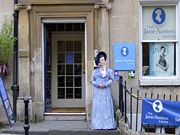
The 1920s saw a boom in Austen scholarship, but it was not until the publication in 1939 of Mary Lascelles's Jane Austen and Her Art that the academic study of Austen really took hold. Lascelles's innovative work included an analysis of the books Jane Austen read and the effect of her reading on her work, an extended analysis of Austen's style, and her "narrative art". At the time concern arose over the fact that academics were taking over Austen criticism and it was becoming increasingly esoteric—a debate that has continued to the beginning of the twenty-first century.
In a spurt of revisionist views in the 1940s, scholars approached Austen more sceptically and argued she was a subversive writer. These revisionist views, together with F. R. Leavis's and Ian Watt's pronouncement that Austen was one of the great writers of English fiction, did much to cement Austen's reputation amongst academics. They agreed that she "combined [ Henry Fielding's and Samuel Richardson's] qualities of interiority and irony, realism and satire to form an author superior to both". The period since World War II has seen more scholarship on Austen using a diversity of critical approaches, including feminist theory, and perhaps most controversially, postcolonial theory.
The disconnection between the popular appreciation of Austen, particularly by modern Janeites, and the academic appreciation of Austen that began in the 1870s and continued with Lascelles, has widened considerably. Austen scholar Claudia Johnson describes "the ludic enthusiasm of...amateur reading clubs, whose 'performances' include teas, costume balls, games, readings, and dramatic representations, staged with a campy anglophilia in North America, and a brisker antiquarian meticulousness in England, and whose interests range from Austenian dramatizations, to fabrics, to genealogies, and to weekend study trips". She argues academics are prone to look askance at these endeavours, though the fact that such activities are now deemed worthy of study suggests this attitude may be changing.
Sequels, prequels, and adaptations of almost every sort have been based on the novels of Jane Austen, from soft-core pornographic novels to fantasy novels. Beginning in the middle of the nineteenth century, Austen family members published conclusions to her incomplete novels, but it was not until the late 1990s that the industry exploded with the 1995 broadcast of the BBC Pride and Prejudice. Five years later, there were over a hundred printed adaptations. According to Lynch, "her works appear to have proven more hospitable to sequelisation than those of almost any other novelist".
List of works
Novels
- Sense and Sensibility (1811)
- Pride and Prejudice (1813)
- Mansfield Park (1814)
- Emma (1815)
- Northanger Abbey (1817) (posthumous)
- Persuasion (1817) (posthumous)
Selected juvenilia and early works
- Love and Freindship
- Catharine, or the Bower
- The Beautifull Cassandra
- The History of England
- Lady Susan
Unfinished works
- The Watsons
- Sanditon
![A watercolour and pencil sketch of Jane Austen, believed to be drawn from life by her sister Cassandra (c. 1810)[a]](../../images/893/89301.jpg)
![The coat of arms of Jane Austen's family, showing a shield with three lions' paws beneath a sitting stag crest.[d]](../../images/893/89303.png)
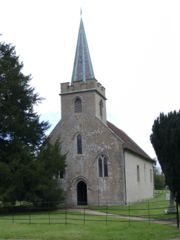

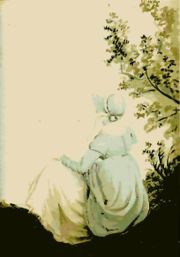
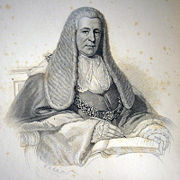
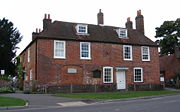
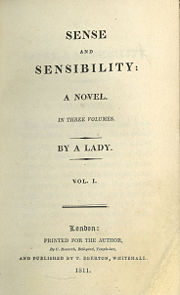
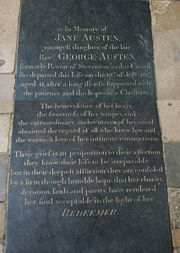
![In 1816, the editors of the New Monthly Magazine noted Emma's publication but chose not to review it.[l]](../../images/893/89318.jpg)
